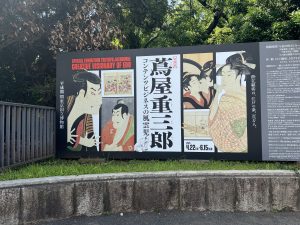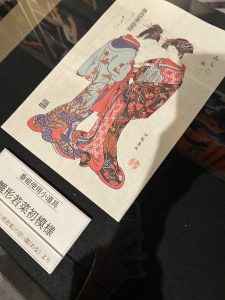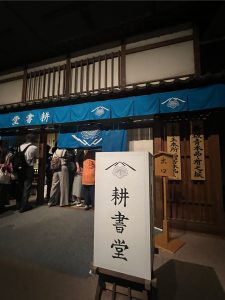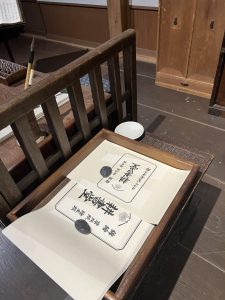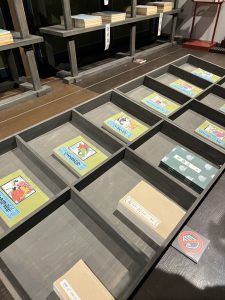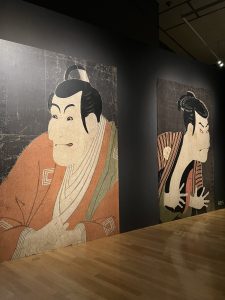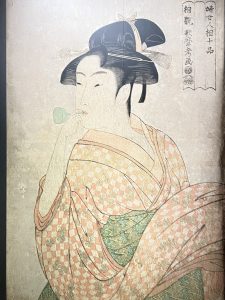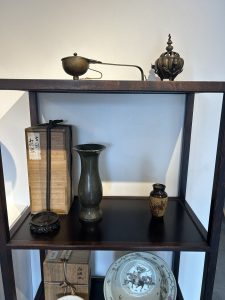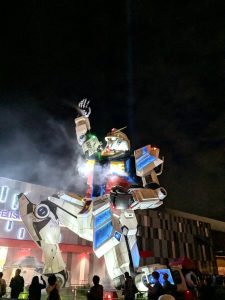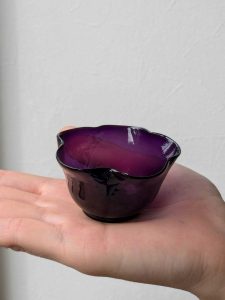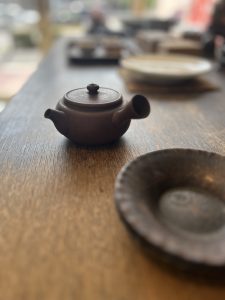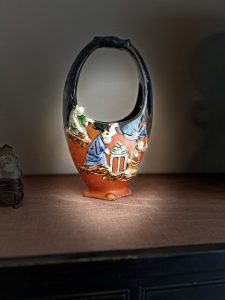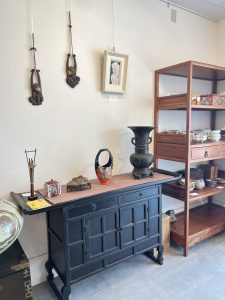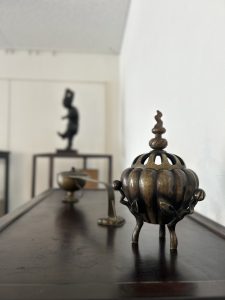史上最短だそうです(愛知県名古屋市千種区姫池通 骨董買取 古美術風光舎)
2025.06.27
九州南部、九州北部、中国、四国、近畿の各地方が梅雨明けした発表されましたね。どの地域も平年より20日ほど早い梅雨明けとなり、九州北部と中国、四国、近畿は、過去最早だそうです。東海地方も間もなくでしょうか…。
本日は、そんな梅雨明けでしょうねと言わんばかりの快晴の中、三重県の伊賀方面まで出張に行ってまいりました。
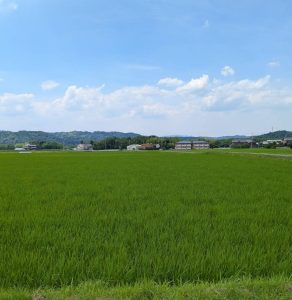
写真では爽やかな風が吹いてきそうですが、暑いです…。
夏の暑さが特に感じられるようになると、やっぱり「冷たいもの」が恋しくなります。
暑さをしのぐため、現代であればアイスクリームやかき氷、キンキンに冷えた飲み物などを、好きな時に口にすることができますが、冷蔵庫はもちろん冷凍庫など存在しなかった昔、人々は冬の間にできた氷や降り積もった雪を、大切に「氷室(ひむろ)」という場所に保存していました。一年を通してひんやりとした涼しさを保てる場所に作られた、文字通り「氷専用のお部屋」です。
その歴史は、遡ると『日本書紀』にも登場するほど古いものになります。「氷室祭」というお祭りを行っている神社もあるそうです。
宮中御用達の氷室は、夏まで氷を保存できるよう日本各地に作られ、氷室を開く日であった「氷の朔日」に大切に届けられたと言います。
その氷は宮中で「氷室の節会(せちえ)」という儀式に用いられ、献上された氷を臣下とともに食すものでした。
また宮中以外にも、幕府に献上されていたという記録もあったようです。もちろん当時の氷は大変な貴重品です。少しでも温度が上がれば、すぐに溶けだしてしまうでしょうから、管理や輸送の大変さは想像以上に違いありません。
もちろん当然、一般庶民にはなかなか口にできるものではありません。でも、「なんとか、氷に似た食べ物はないだろうか」と考える人々は、時に天才的なひらめきを発揮します。
そこで、お正月の鏡餅を細かく砕き乾燥させて作った「氷餅(こおりもち)」や「凍み餅」を、この日に合わせて氷の代わりに食べるようになったのだとか。
小さく砕いたお餅は、見た目が鬼の牙のようにも見えるということから、6月1日は別名「鬼の朔日」とも言われています。
お餅となると「涼しさ」とはかけ離れているような気がしますが、その「がりがり」とした歯ごたえのある食感から、昔の人は想像力を膨らませ「氷」を思い浮かべていたのかもしれません。
今では当たり前のように誰もが口にできるようになった氷ですが、夏はよりその存在にありがたみを感じます。
梅雨明けが早いぶん、夏本番の厳しい暑さと寝苦しさが長く続くわけですが、こんな時こそさまざまな「冷たいもの」を楽しみながら、今年も酷暑を乗り切りましょう。
ではでは、また。(スタッフT)

It has been announced that the rainy season has ended in southern Kyushu, northern Kyushu, Chugoku, Shikoku, and Kinki regions. The rainy season has ended about 20 days earlier than normal in all regions, with northern Kyushu and the Chugoku, Shikoku, and Kinki regions marking the earliest on record. The Tokai region will soon see the end of the rainy season as well….
Today, I went on a business trip to the Iga area in Mie Prefecture under clear skies that seemed to indicate that the rainy season must be over.
The picture looks like a refreshing breeze is blowing, but it is hot….
When the summer heat is especially felt, I still miss “cold food”.
In the old days, when refrigerators and freezers did not exist, people carefully stored ice and snow in “Himuro,” or ice chambers, in order to keep cool throughout the winter. It was literally a “room exclusively for ice,” built in a place where coolness could be maintained throughout the year.
Its history is so old that it even appears in “Nihon Shoki (Chronicles of Japan). Some shrines even hold a festival called “Himuro Matsuri.
Icehouses were built throughout Japan to preserve ice until the summer, and the ice was delivered to the Imperial Court on the first day of the ice season, which was the day the icehouses were opened.
The ice was used in a ceremony called “Hyoshitsu no sechie” at court, where the ice was presented to the court and eaten together with the subjects.
There were also records of ice being presented to the Shogunate. Of course, ice was a very precious commodity in those days. If the temperature rose even a little, it would melt immediately, making it even more difficult to manage and transport than imagined.
Naturally, it was not easy for the general public to eat ice. However, people who thought, “Is there any food similar to ice?” sometimes showed genius inspiration.
So they began to eat “koorimochi” or “frozen rice cakes,” made by crushing and drying New Year’s mirror cakes into small pieces, in place of ice on this day.
The small crushed rice cakes look like the fangs of an ogre, which is why June 1 is also known as “Oni no Sakuhi” (the first day of the month of the ogre).
Mochi may seem a far cry from “coolness,” but its crunchy texture may have made people in the past think of “ice” in their imagination.
Nowadays, ice has become a commonplace food for everyone, but we appreciate its presence more in summer.
The early end of the rainy season means that the summer heat and the difficulty of sleeping will continue for a long time, but this is the time to enjoy a variety of “cold foods” and get through this year’s extreme heat.
See you soon. (Staff T)
*******************
ご実家の整理やお片付けなどをされている方のご相談などが多くございます。
お片付けなどくれぐれもご無理のないようになさってくださいませ。
風光舎では古美術品や骨董品の他にも絵画や宝石、趣味のお品など様々なジャンルのものを買受しております。
お片付けをされていて、こういうものでもいいのかしらと迷われているものでも、どうぞお気軽にご相談下さいませ。
また風光舎は、出張買取も強化しております。ご近所はもちろん、愛知県内、岐阜県、三重県その他の県へも出張いたします。
まずは、お電話お待ちしております。
愛知県名古屋市千種区姫池通
骨董 買取【古美術 風光舎 名古屋店】
TEL052(734)8444
10:00-18:00 OPEN

